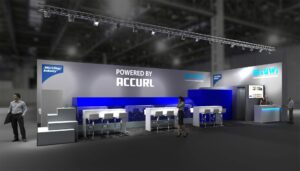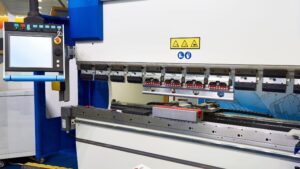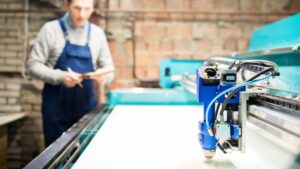Press brakes transform the speed and quality of metal fabrication and processing. This is why you will always find a press brake in every metalworking workshop. However, many professionals new to the technology often question press brake advantages. This article will discuss the same in-depth and examine how press brakes can benefit your industry.
Press Brake Overview
By definition, a press brake is a machine for bending metal. The workpiece can be sheet metal or metal plates. The bending process is accomplished by applying force on the clamped workpiece with a V-shaped die. There are many options for the movement mechanism of the press brakes. The different movement mechanisms are hydraulic, manual, and electrical.
Advantages of Press Brakes

Press brakes provide countless benefits over alternative processes like folding and panel bending sheet metal. Some of the advantages of press brakes are:
- Reducing Waste: Press brakes are an accurate way of bending metal. As such, press brake machines help in reducing waste and eliminate rejections.
- Smart Technology: CNC press brakes provide an advanced automated solution to bending metal. This makes modern press brake a very smart technology.
- Faster Production: Press brakes speed up the production process. This occurs by combining automated processing with reduced defects.
- Easy Operation: Press brakes are one of the easiest pieces of equipment to operate. They do not require highly skilled operators like other machines.
- Reduce Labor Costs: Automated press brake machines reduce the cost spent on labor. This helps in lowering the cost per part.
- Improved Safety: Modern press brake machines come with many different safeguard measures like laser sensors. The sensors stop the metal fabrication operation when the operator is in harm’s way.
- In-house Manufacturing: Metal fabrication workshops usually outsource the bending process to third parties. However, modern press brakes are quite cheap. This allows metal fabrication workshops to undergo the entire manufacturing in-house.
- Versatility: Modern press brakes can work on many different shapes of bends. Additionally, sheet metal of varying thicknesses can be bent. Changes to setups are not needed due to the presence of automated thickness detection software.
- Programming: Changes to the setup can be done using programming. The operator does not need to adjust the machine settings manually.
- Complex Bends: A modern press brake can use different types of dies and modified programming, allowing the creation of complex bends like cones.
- Affordable: Simple press brakes are a very affordable technology. Therefore, even small-scale metal fabrication shops can install these machines in their facility.
- Many Different Options: Many types of press brake machines are available to suit different requirements. Therefore, you can find a machine that will fulfill your exact demands.
- Seamless Workflow: CNC press brakes can fit directly into the assembly line of your metal fabrication workshop.
Are There Any Disadvantages To Press Brakes?

Press brakes are the best solution for bending sheet metals. However, they can have certain disadvantages for some users. These potential disadvantages are:
- Cost: Press brakes with automation come with a hefty price tag. This can dissuade small workshops from buying high-end models.
- Training: Press brakes do not require the skill of many other metal working machines. Even so, the operator requires some training on the technology. This calls for some added expenditure on training costs.
- Space Requirements: Press brakes can have goliath dimensions. You must dedicate much of your workshop floor space to the machine.
- Maintenance: Press brakes, like all industrial equipment, require regular maintenance. These machines can break down without a proper maintenance cycle.
- Noise: A press brake is a noisy machine during operations. Therefore, the workforce might require ear protection equipment. Additionally, it also causes vibrations in the workplace.
Different Types of Press Brakes and Their Advantages
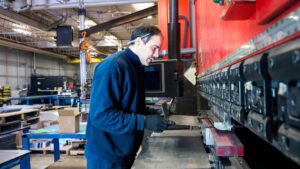
There are many different types of press brakes. Each of these types can bring particular benefits based on the applications. These different types are:
Mechanical Press Brake
Mechanical press brakes use a flywheel mechanism to move the bending ram. Electrical motors operate the flywheel. A clutch mechanism provides control over the degree and speed of the movement. The driving force in these press brakes is the mechanical energy of the flywheel. The advantages of a mechanical press brake are:
- A mechanical press brake has a simple mechanism.
- It is a beginner-friendly machine.
- The maintenance and repair process is cheap and easy.
- They have a high bending capacity.
Hydraulic Press Brake
A hydraulic press brake generates force due to water pressure. They do not use a mechanical system such as the flywheel. Water cylinders are capable of minute movements. Therefore, the operator has higher control over the degree of the bend. The driving force in these press brakes is the hydraulic pressure. The advantages of a hydraulic press brake are:
- They provide a higher degree of customization.
- They have high-end precision while bending.
Servo-electric Press Brake
A Servo electric press brake uses servo motors to move the bending die. A belt and pulley mechanism transfer the movement of the servo motors. The driving force in these press brakes is electrical energy. The advantages of servo-electric press brakes are:
- They have a simple setup.
- Parts like servo motors are easily fixable.
- The bending operation is very cheap.
- The lack of hydraulic mechanism eliminates risks and costs of oil leakage.
CNC Press Brake
A CNC press brake uses Computer Numerical Control for automation in the bending process. These modern machines can have a hydraulic or electrical movement system. The movement itself is controlled by CNC programming.
Accurl’s CNC press brakes have completely transformed the metal bending process. Companies in every metal fabrication segment use these machines to add in-house bending in their facility. The benefits of these machines are:
- Automation in the bending process.
- Setup parameters can be directly adjusted remotely.
- These machines can be integrated in the assembly line.
- Any changes in the bending values can be made by adjusting values in the programs.
Tandem Press Brake
A tandem press brake is a combination of smaller press brake machines. Small individual press brakes are coupled to work in tandem. The objective is to bend a large workpiece or create consistent bends in a smaller workpiece. The advantages of tandem press brake are:
- Ability to bend metal sheet metal with lengths as far as 60 feet.
- Faster bending for large volume parts where the same bending angle is required.
- Cheaper in cost than building a single large press brake.
Pneumatic Press Brake
Pneumatic press brakes use air pressure to move the bending die. They are very similar to hydraulic press brakes, replacing liquid pressure with air pressure. However, they provide a fraction of the bending force when compared to other types of press brake. The advantages of a pneumatic press brake in metal fabrication are:
- They provide a high-speed operation for bending small-scale parts.
- There is no risk of oil leakage.
- Maintenance requirements are low.
How to Get the Most From a Press Brake?
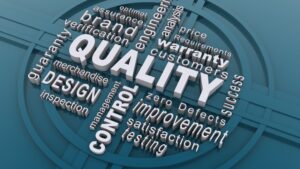
The above sections illustrate the many benefits that a press brake provides. You can avail an added improvement on these benefits by following the below tips:
Choosing the Right Press Brake
Press brakes have many different types and models. Choose the press brake machine that is ideal for your requirement. Here are some suggestions for different applications:
- Complex bends: Multi-axis CNC press brake
- Bending Large Sheet Metal: Tandem press brake
- Simple Bends With Automation: 3-4 Axis CNC press brake
- Niche Applications: Custom press brake
Build Quality
Press brake tooling is designed to punch heavy sheet metals. Therefore, focus on a machine with a good build quality. Compromising build quality to save a fraction of the cost will lead to serious machine breakdowns and labor injury.
Bending Capability
Get a machine that can handle the sheet metal bending requirement you have. For instance, hydraulic and pneumatic machines have very low punching force and do not perform well for heavy-duty applications.
Patience
It can take some time to get precise results from your press brake. Therefore, be patient and spend time learning the machine instead of directly using it for projects.
Who Benefits From a Press Brake?
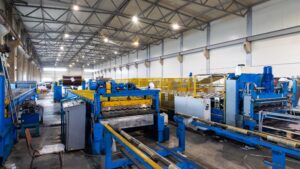
Manufacturers and metal fabrication workshops looking for modern machines to produce complex parts in-house benefit most from a press brake. Press brakes provide a cheap solution to the bending process in metal forming. Additionally, equipment such as Accurl’s CNC press brake machines takes things a step further. They provide the bending operations of sheet metals while reducing overall labor costs.
Therefore, manufacturers looking for correct angle bends at a low cost also benefit greatly from this equipment. They are also good at increasing efficiency while reducing waste and manufacturing errors.
Endnotes
Press brakes have more advantages and applications than any other alternative in metal fabrication. This is why these machines are used everywhere, from small workshops to large manufacturing facilities.
The current technology has added great automation to the whole process. Machines like CNC press brakes can create the correct angle bend without human intervention. These can be a great fit if you are considering investing in a new press brake for your metal fabrication industry.



